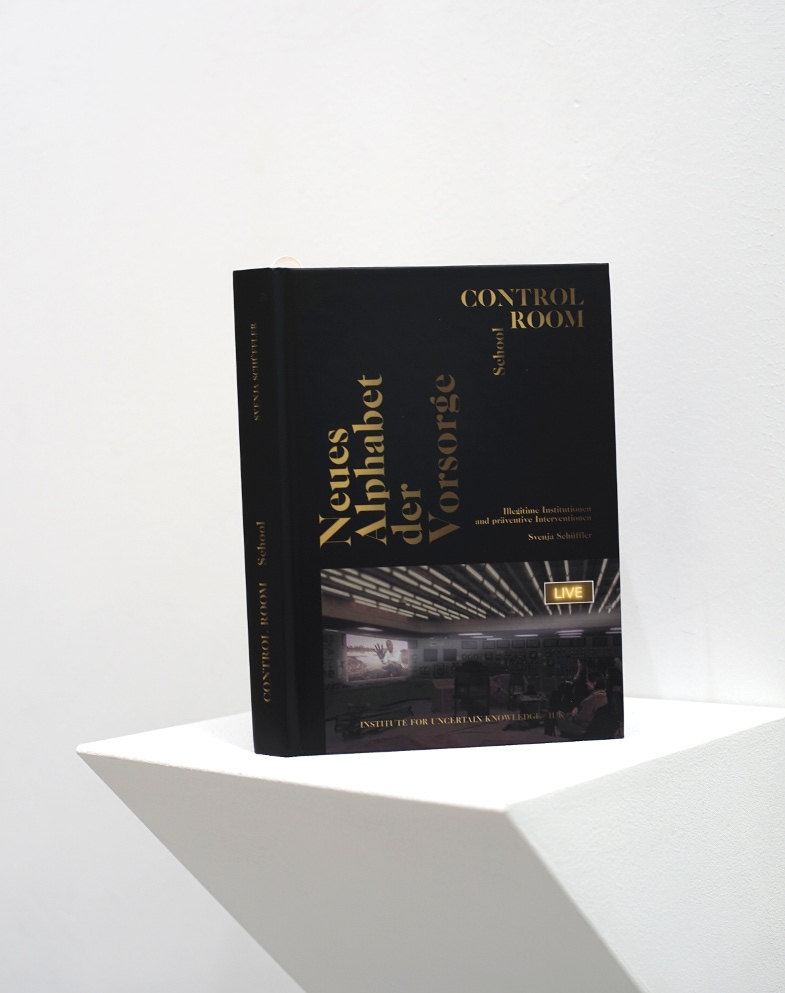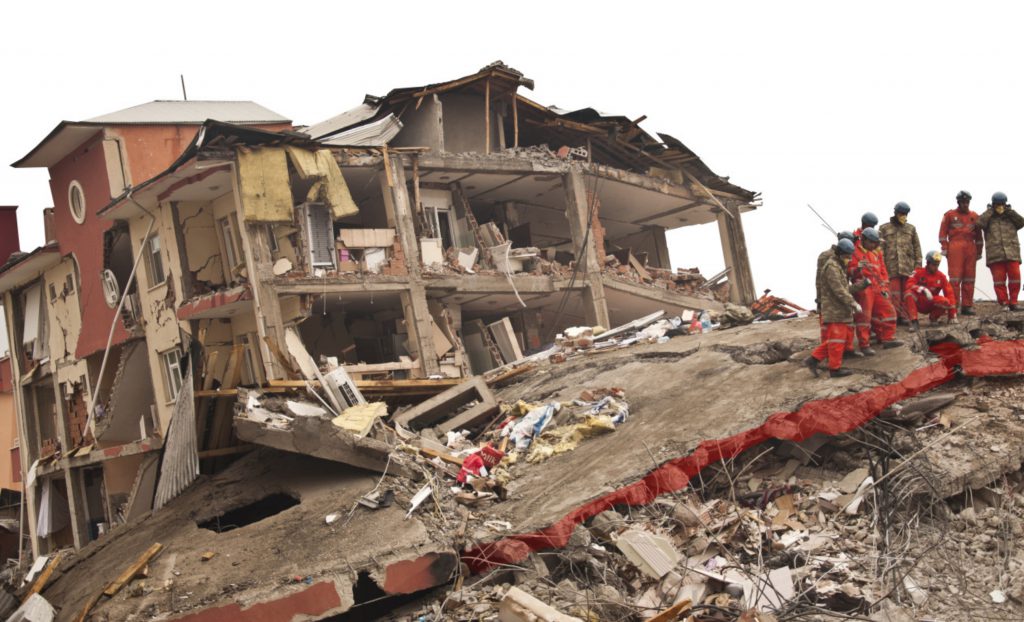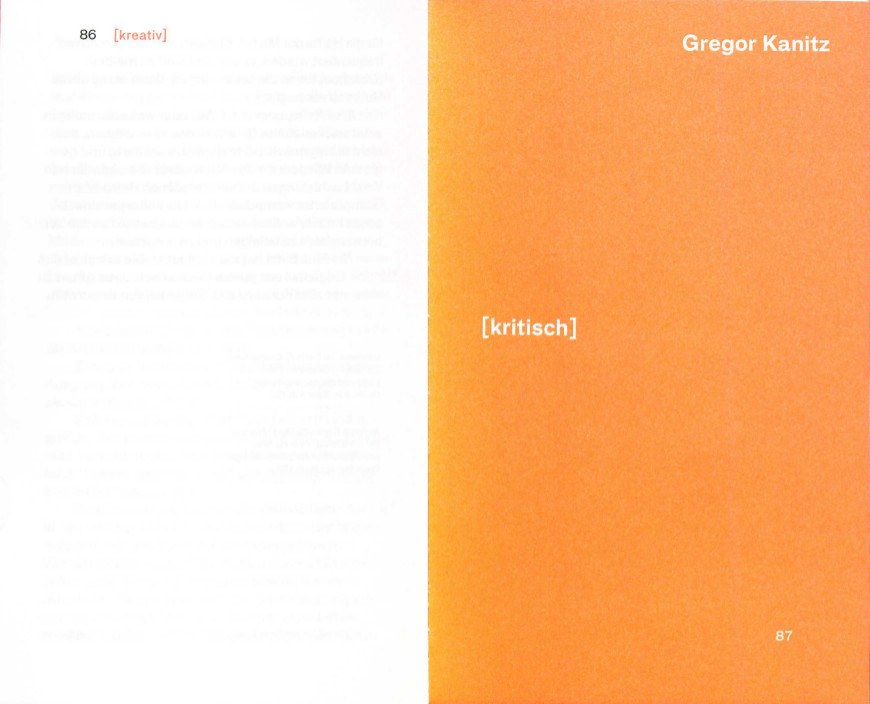ESSAY
How to manage the Apocalypse?
By Svenja Schüffler (2019)
With regards to content, the art works correspond with the essay “How to manage the Apocalypse?“. It will be presented in the exhibition as part of an artist book. Visitors are also invited to take a copy of it home. Different readings of essay and pictures reflect and inspire each other.
Both aesthetically and literarily, the project poses the question: “How to manage?“, and explores whether management in a high-tech civilization significantly fueled by fossil carbon follows this glorifying logic: Safeguarding energy supplies and technology projects takes absolute precedence over the accompanying side effects. Wouldn‘t that mean, that undesired consequences don‘t require prevention but just control, so to speak management?
There seems to be no just basis for a belief that sees disasters and undesired consequences as things that can be managed, because the limits of insurability, that is the increasing lack of private insurance, suggests uncontrollable and incomputable insecurities and technological risks on a global scale.
A non-contestable justification is generated to raise alarm. “How to manage the Apocalypse?“ investigates into the issue of how a new method of talking about the end can be attained, one that names the catastrophe loud and clear, in order to prevent it. Both in the exhibition and in her essay Svenja Schüffler explores this question with a thought experiment and the conception of a ‘School of Early Warning’ that cautions the end of all guarantee.
VORTRAG
Geschichten motorischer Umgebung. Junge Wilde und gefährliche Milieus
Leicht überarbeiteter Vortrag am Graduiertenkolleg Topologie der Technik, TU Darmstadt vom 04.02.15
By Gregor Kanitz
Englisch foreword
Dangerous Youth
Apart from very few examples like dangerous dares connected to alcohol, little thefts etc “youth” nowadays does not seem really hazardous or risky to mid-European societies. There are discussions about young people spending hours and hours with their mobile-phones or playing computer-games over several days, but only a few would consider this as a threat to society.
This was much different until the 1960s/70s, at least since the 19th century there was a tremendous concern about “wrong” ways of growing up and especially in metropolitan regions juvenile delinquency caused daily troubles and alarms.
This project deals with youth as a history of knowledge aiming at technological and aesthetic questions. Youth has been treated over the centuries by the respective academic disciplines like pedagogy, sociology or psychiatry. At the same time juvenile practises and habits came into view generating adventure stories or certain styles like fashion or hair-cuts. Examining these styles inspired a vast range of international Cultural Studies since the 1960s.
Very roughly you can differentiate between two directions of youth research: The (seemingly older one) aims at solving the social and medical problems of youth from a grown-up academic perspective. The seemingly newer perspective looks at youth as an emancipatory force. But it is necessary to look at both strains as a history of knowledge, combining the popular and “low” cultural forces with the academic “high” discourses, because the one does not work without the other.
There are three eras, which need to be observed in this transdisciplinary way. Chronologically inverted it starts with the post-war period of the 1950s/60s, goes back to 1900 and will end in the 18th century, when Rousseau inspired the first discussions on this liminal life phase of youth.
The first paper deals with the fictional and scientific imaginations of the German “Halbstarke”. For German authorities their riots were inspired by American movies showing the dangerous effects of cars and motorcycles. The paper examines the affective and technological dimensions of these juvenile practises focussing on the 1950s. Popular aesthetics interfere professionals caring about “youth protection” confronted with juvenile “wild” behaviour.
ESSAY
Kanitz, Gregor (2013). kritisch-inflationär. In: Glossar inflationärer Begriffe (von dilettantisch bis virtuos). Published by ngbk, Berlin / / ISBN: 978-3-938515-51-8
kritisch-inflationär ( PDF – german)
PDF – german)
Criteria of crisis – critique as process
This essay is part of the book Glossar inflationärer Begriffe, which accompanied the exhibition DIE IRREGULÄREN – ÖKONOMIEN DES ABWEICHENS at the NGBK – Neue Gesellschaft für Bildende Kunst e.V., Berlin from 20|04|13 to 02|06|13. Curaters and Editors of the book are Anna Bromley, Michael Fesca, Sara Hillnhütter, Eylem Sengezer and Olga von Schubert.
The current efforts concerning artistic research raise the question, which standards and measures of value can be ascribed to artistic operations and creations. A central issue in this respect is critique as purpose and practise shared both by scientists and artists. A very rough history of the political, aesthetic and material implications of the adjective “critical” may show the difficulties and hopes of critical energies and behaviours from enlightenment to nowadays’ criticality of smart mobs. Critique is a process, which is historically connected to “crisis”: A decision is reached, a distinction is made at a certain point after long debates, after sleepless nights, after a certain experiment or after a revolt or revolution. Beyond this point the criteria for criticism might have changed, the artistic standards reach scientific measures, become a nerds’ ambition or both. The essay points at a sociopolitical and aesthetic theory of these changes. But it is in German and it is written by a “Geistesgeschichte”-nerd.
Excerpt from the text:
Bis heute kann kaum jemand unbeschadet behaupten, unkritisch zu sein. Die Verpflichtung zu kritischen Haltungen ist bereits so lang inflationär, dass einige Blicke in die Geschichte Aufschluss geben können über Konstellationen kritischer Prozesse.
Es wird kritisch, sagt man, wenn eine Entscheidung ansteht. …
By Gregor Kanitz
ESSAY
Schüffler, Svenja (November 2016). Published at Anthropocene Curriculum Platform of Haus der Kulturen der Welt Berlin HKW / Max Planck Institute for the History of Science.
Installing Seismic Risk of Istanbul
Calculated surprise and torn-down slabs. An introduction to the art-science project Installing Seismic Risk of Istanbul. Supported by the German Research Centre for Geoscience GFZ Potsdam and presented at the Forecast Forum, HKW 2015. …
By Svenja Schüffler Photograph by Idris Bedirhanoglu, Dicle University, Diyarbakır, Turkey
Photograph by Idris Bedirhanoglu, Dicle University, Diyarbakır, Turkey
ESSAY
Schüffler, Svenja (November 2016). Published at Anthropocene Curriculum Platform of Haus der Kulturen der Welt Berlin HKW / Max Planck Institute for the History of Science.
KAIROS Earthquake Early Warning Application
An Instruction for turning Risk into facing your Danger
There is this unpredictable moment when the underground faults start to rupture. Between the start of the cracking of the Earth and the arrival of the waves that tear through underground, until they shake everything at the surface, there is a tiny, special moment of time. Less than a Chronos [1], yet an instant that could be enriched and transformed through a knowledge beyond primal cognition and experience. A knowledge that could help you save your life, whoever you are, and wherever you might be …
By Svenja Schüffler
 Photograph by Svenja Schüffler
Photograph by Svenja Schüffler


